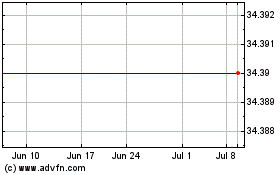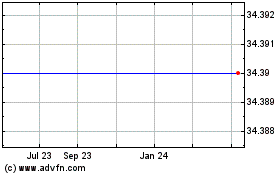U.S. Banks are on track to regain their footing in terms of
earnings despite strict regulatory requirements. But the industry’s
growth momentum slowed down in the third quarter with lesser
mortgage activity and a few mega-players being muted by legal
settlements.
However, financial institutions that depend less on risky
activities and resort to other profit-making ways seem to have a
brighter future thanks to their fundamental strength.
Overall, expense control, sound balance sheets and lesser credit
loss provisions should continue to remain the key earnings drivers
in the upcoming quarters. Moreover, a favorable equity and asset
market backdrop, falling unemployment, a progressive housing sector
and flexible monetary policy are making the road to growth even
smoother.
Yet uncertainty related to top-line growth looms due to lack of
significant loan growth (primarily the home equity lines of
credit), pressure on net interest margins from the sustained low
rate environment and less flexible business models owing to
stringent risk-weighted capital requirements (Basel III standards).
However, banks have been gradually easing their lending standards
and trending toward higher fees to dodge the pressure on the top
line.
Now that the interest rate environment is reversing, net interest
margins are likely to improve and support the top line
significantly. But revenues from mortgage fees will lessen as the
boom in mortgage refinancing fizzles out. Whether the loss of fee
revenues will be compensated by gains from interest rate spreads
can however be said only in the course of time.
We don’t see this issue-ridden sector returning to its
pre-recession peak anytime soon. What encourages us though is that
the U.S. banks are taking legal and regulatory pressure in their
stride, indicating their ability to encounter challenges.
Overall, structural changes in the sector will continue to impair
business expansion and investor confidence. Several dampening
factors -- asset-quality troubles, mortgage liabilities and tighter
regulations -- will decide the fate of the U.S. banks in the
quarters ahead. But the new capital regime will ensure long-term
stability and security for the industry.
Zacks Industry Rank
Within the Zacks Industry classification, U.S. banks are broadly
grouped in the Finance sector (one of 16 Zacks sectors) and are
further sub-divided into six industries at the expanded level:
Banks-Major Regional, Banks-Midwest, Banks-West, Banks-Northeast,
Banks-Southeast and Banks-Southwest. The level of sensitivity and
exposure to different stages of the economic cycle vary for each
industry.
We rank all the 260-plus industries in the 16 Zacks sectors based
on the earnings outlook and fundamental strength of the constituent
companies in each industry. To learn more visit: About Zacks
Industry Rank. http://www.zacks.com/zrank/about_ind_rank.php
As a guideline, the outlook for industries with Zacks Industry Rank
of #88 and lower is 'Positive,' between #89 and #176 is 'Neutral'
and #177 and higher is 'Negative.'
The Zacks Industry Rank for Banks-West is #14, Banks-Midwest is
#24, Banks-Northeast is #47, Banks-Southwest is #68,
Banks-Southeast is #73 and Banks-Major Regional is #101.
Considering the Zacks Industry Rank of the six banking industries,
one could safely say that the near-term outlook for the group is
leaning toward 'Positive.'
Earnings Trend of the Broad Sector
The broader Finance sector, of which U.S. banks are part, is in
good shape with respect to earnings so far this year. But the third
quarter was somewhat downbeat compared to the prior two
quarters.
Total Finance sector earnings increased 9.9% on 0.6% higher
revenues, with 59.0% companies beating earnings and 46.2% coming
ahead of revenue expectations. This compares unfavorably with a
substantially higher earnings improvement of 32.5% on 7.9% growth
in revenues in the second quarter of 2013 when 76.9% companies beat
on earnings and 61.5% surpassed revenue estimates.
Importantly, excluding the huge contribution from
Bank of
America Corporation (BAC), the sector’s performance was
just average, with only 3.3% earnings growth.
Yet, the sector is heading in the right direction to regain its
leadership in earnings contribution in the S&P 500 this year.
It contributed 19.2% to the Index earnings so far this year, the
highest among all sectors. However, the sector is yet to achieve
its record 27% share of the Index earnings in 2007.
Earnings Preview: Q4 Estimates Show Potency
The consensus earnings expectations for the fourth quarter and full
year 2013, however, depict a fairly strong trend. Earnings growth
is expected to move up to 20.3% despite an expected revenue decline
of 7.8% in the quarter. For the full year, the sector is expected
to witness 13.9% earnings growth despite a 10.2% decline in
revenues.
However, with continued expense management by sector participants,
margin is expected to show improvement. Net margin is likely to
increase 370 basis points (bps) year over year to 15.7% in the
fourth quarter. The full year is also likely to see a 340 bps
margin improvement.
What Do Lower Q3 Earnings at FDIC-Insured Banks
Signal?
For the first time since the second quarter of 2009, Federal
Deposit Insurance Corporation (FDIC) insured commercial banks and
savings institutions witnessed a year-over-year decline in earnings
in the third quarter of 2013. Net income came in at $36.0 billion,
lagging the year-ago earnings of $37.5 billion by 3.9%.
However, this does not signal trouble in the industry, as a $4
billion increase in litigation expenses in one institution was
primarily responsible for dragging the results down. “Had it not
been for that, the upward trend in earnings would have continued
for the industry,” said FDIC Chairman Martin J. Gruenberg.
On the fundamental side, reduction in mortgage lending activity was
the biggest dampener. Mortgage originations are less likely to show
any favorable trend in the quarters ahead given the increase in
lending rates that will lessen the demand for mortgage
re-financings.
In addition to contraction in provisions for credit losses and cost
containment, continued recovery in the bond and equity markets, and
the consequent growth in noninterest income should keep boosting
earnings. Moreover, prolonged improvement is expected from the
settlement of major legal issues that weighed on the mega
players.
Fewer Bank Failures and Problem Institutions
During the third quarter of 2013, failure of the FDIC-insured banks
lessened to just 6 from 12 in the year-ago quarter. In total, 23
banks failed in the first nine months of the year compared with 50
in the same period a year-ago. Moreover, as of Sep 30, 2013, the
number of banks on the FDIC's "Problem List" declined to 515 from
553.
The slower pace of bank failures and decline in problem banks
indicates continued improvement in the sector. Though there will be
fewer bank failures in 2013 compared to 2012, the industry is still
to see an average failure of just four or five banks annually,
which would indicate maximum strength in the
industry.
Growing Faster Will Not Be Easy
As the gap between loss provisions and charge-offs is gradually
narrowing, reduction in provisions is not likely to remain a
significant earnings driver in the upcoming quarters. So banks are
trying to look at other areas -- primarily non-interest income and
operating costs. But opportunities will be curbed by regulatory
restrictions and a still shaky economic recovery.
Efforts to cut interest expenses and take additional risks to
improve net interest margins could be marred by a still-flat yield
curve. Further, shifting assets to longer maturities for
strengthening net interest margin could backfire with the expected
increase in interest rates in the near term.
Conversely, increasing revenues through non-interest sources --
charges on deposits, prepaid cards, new fees and higher minimum
balance requirement on deposit accounts -- could be hampered by
regulatory actions and soaring overhead. However, with a rebound in
capital market activity, the propensity to invest in the market has
increased, which may lead to more non-interest revenue sources.
Eventually, banks will have to take resort to cost containment
through job cuts and reduced operational size. But any cost-cutting
measure will act as a defense. The industry witnessed more than
half a million layoffs over the last five years just to stay
afloat, and the story will continue.
Balance Sheet Recovery on Track
Steady deposit growth from lack of low-risk investment
opportunities is quite possible, but high charge-offs and
delinquency rates plus weak demand could keep loan growth under
pressure in the near to mid term. Though banks are easing lending
standards to accelerate loan growth, credit quality concerns are
likely to mar the effort.
Moreover, though growth in gross domestic product (GDP) and
reducing unemployment will help banks strengthen their balance
sheets, expected unrealized losses on underlying securities due to
rising interest rates will act as dampeners.
However, banks are trying to reorganize risk management practices
to address potential solvency issues from rising interest rates.
Efforts are also being given to address asset-quality troubles by
divesting nonperforming assets. Yet, we don't expect balance-sheet
strength to return to pre-recession peak anytime soon.
OPPORTUNITIES
Though improved performances by banks seem already priced in and
significant concerns remain, the sector is unlikely to disappoint
investors in the upcoming quarters.
Specific banks that we like with a Zacks Rank #1 (Strong Buy)
include
BofI Holding, Inc. (BOFI),
TriCo
Bancshares (TCBK),
First Interstate Bancsystem
Inc. (FIBK),
Mainsource Financial Group
(MSFGTM),
Arrow Financial Corporation (AEOW),
Center Bancorp, Inc. (CNBC),
Southside
Bancshares Inc. (SBSI) and
American National
Bankshares Inc. (AMNB).
Stocks in the U.S. banking universe with a Zacks Rank #2 (Buy)
currently include
KeyCorp (KEY),
Bank of
Hawaii Corporation (BOH),
City National
Corporation (CYN),
Associated Banc-Corp
(ASBC),
Chemical Financial Corporation (CHFC),
First Commonwealth Financial Corp. (FCF),
The Community Financial Corp. (TCFC),
BancFirst Corporation (BANF) and
Bank of
the Ozarks, Inc. (OZRK).
WEAKNESSES
Difficulty in liquidity management due to regulatory restrictions
will restrict top-line growth of banks in the quarters ahead.
Specific banks that we don't like with a Zacks Rank #5 (Strong
Sell) are
Banc of California, Inc. (BANC),
Farmers Capital Bank Corporation (FFKT). We also
don’t recommend a few Zacks Rank #4 (Sell) banks including
VantageSouth Bancshares, Inc. (VSB),
Tristate Capital Holdings, Inc. (TSC),
BOK
Financial Corporation (BOKF) and
First Horizon
National Corporation (FHN).
AMER NATL BNKSH (AMNB): Free Stock Analysis Report
ARROW FINL CORP (AROW): Free Stock Analysis Report
ASSOC BANC CORP (ASBC): Free Stock Analysis Report
BANK OF AMER CP (BAC): Free Stock Analysis Report
BANC OF CA INC (BANC): Free Stock Analysis Report
BANCFIRST OKLA (BANF): Free Stock Analysis Report
BOFI HLDG INC (BOFI): Free Stock Analysis Report
BANK OF HAWAII (BOH): Free Stock Analysis Report
BOK FINL CORP (BOKF): Free Stock Analysis Report
CHEMICAL FINL (CHFC): Free Stock Analysis Report
CENTER BANCORP (CNBC): Free Stock Analysis Report
CITY NATIONAL (CYN): Free Stock Analysis Report
FIRST COMW FINL (FCF): Free Stock Analysis Report
FARMERS CAP KY (FFKT): Free Stock Analysis Report
FIRST HRZN NATL (FHN): Free Stock Analysis Report
FIRST INTST MT (FIBK): Free Stock Analysis Report
KEYCORP NEW (KEY): Free Stock Analysis Report
MAINSOURCE FINL (MSFG): Free Stock Analysis Report
BANK OZARKS (OZRK): Free Stock Analysis Report
SOUTHSIDE BANCS (SBSI): Free Stock Analysis Report
TRICO BANCSHRS (TCBK): Free Stock Analysis Report
COMMNTY FIN CP (TCFC): Get Free Report
TRISTATE CP HLD (TSC): Free Stock Analysis Report
VANTAGESOUTH BC (VSB): Free Stock Analysis Report
To read this article on Zacks.com click here.
Axos Finl (delisted) (NASDAQ:BOFI)
Historical Stock Chart
From May 2024 to Jun 2024

Axos Finl (delisted) (NASDAQ:BOFI)
Historical Stock Chart
From Jun 2023 to Jun 2024
